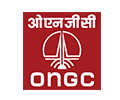Global Frac Stack Market
Source: The Report Cube
Understand The Key Trends Shaping This Market
Download Free SampleFrac Stack Market Insights & Analysis
The Global Frac Stack Market is anticipated to register a CAGR of around 4.80% during the forecast period, 2026-32. Also, the market size was valued at nearly USD 13.38 billion in 2025 and is foreseen to witness nearly USD 18.58 billion during 2032. The market is being motivated by the growing demand for unconventional oil & gas resources, chiefly shale & tight reservoirs, which is improving the requirement for sophisticated hydraulic fracturing technologies in frac stacks. Also, to reach these resources, producers are deploying hydraulic fracturing when traditional reserves run out. Further, the industry is growing as a result of an upsurge in oil exploration & drilling operations.
Frac stack is a high-pressure “Christmas tree” gathering utilized for hydraulic fracturing, consisting of upper & lower master valves, flow cross, wing valves, and more, engineered to handle extreme pressures & flow rates during fracture operations. Also, Frac stacks are presented in both manual & automated systems, apt for vertical, horizontal, and multi-stage wells, with alternates supporting water-based, oil-based, and hybrid fluids, and differing proppant types such as sand or ceramic.
Additionally, the Frac Stack Market is also observing substantial growth as a result of technical developments such as real-time data analytics, IoT integration, automation, and AI-driven pressure control, which are enhancing operational safety, efficacy, and decision-making. For example, in regions like Saudi Arabia, the adoption of advanced data analytics is revolutionizing oilfield operations by providing predictive insights and optimizing hydraulic fracturing processes. For a detailed regional perspective on these analytics-driven advancements, the Saudi Arabia Data Analytics Market report offers comprehensive insights into how data technologies are transforming energy and industrial sectors in the Middle East.
Consequently, owing to the surging usage of dependable & effective systems, compliance with stricter laws, and the amalgamation of digital processes, the Frac Stack Market is foreseen to have a strong foothold in the future years.
Frac Stack Market Upgrades & Recent Developments
2025:
- Schlumberger Ltd. launched the Mangrove reservoir-centric stimulation design software, a Petrel-based platform empowering optimal completion & fracturing programs, enhancing production efficacy (e.g., +50 % production in Marcellus).
- Baker Hughes Company continues to advance frac-pack systems with its SC-XP gravel- & frac-packing system, providing improved operational flexibility & dependability in extreme environments (up to 15,000 psi & high proppant volumes).

Frac Stack Market Dynamics
-
Driver: Increasing Global Energy Demand & Unconventional Resources to Elevate Market Share
The exceptional demand for energy, specifically from unconventional oil & gas resources, has resulted in operators deploying cultured fracturing approaches. The Frac Stack Market aids as it plays a fundamental role in supporting hydraulic fracturing operations. Moreover, innovations such as automated frac stacks empower stable pressure & fluid control, indispensable for maximizing yield from shale, tight oil, and similar plays. Hence, this market driver underscores the increasing market share for key market companies providing strong, high-performance frac trees.
-
Challenge: Environmental & Regulatory Pressures to Hamper Industry Growth
The environmental impact of fracturing, water contamination, methane emissions, and seismic risks has ignited severe standards globally. Designing efficient & reliable frac stack systems that lessen leaks & emissions and abide by green mandates adds cost & complication. Hence, this challenges Frac Stack Market companies to invest greatly in R&D and regulatory compliance, possibly decelerating expansion in price-sensitive regions, thus hampering market progression globally.
-
Opportunity: Digital Transformation & Smart Systems to Open New Avenues
The thrust toward IoT, real-time data analytics, AI-driven control, and digital frac stack systems provides a noteworthy opportunity. Smart frac stacks enable predictive maintenance, remote monitoring, and automated control, minimizing downtime, enhancing safety, and cutting operational spending. Also, companies that embrace these technologies stand to gain a competitive advantage, unleashing growth in oilfield services in North America, Asia-Pacific, and numerous other regions worldwide.
-
Trend: Horizontal Drilling & Multi-stage Fracturing
The usage of multi-stage fracturing & horizontal wells is common in contemporary E&P, which surges the requirement for frac stacks designed to accommodate intricate well geometries. Also, as operators perform lengthier laterals with numerous stages, they require frac stacks that guarantee accurate proppant supply, zone isolation, and pressure control. Further, owing to the supremacy of horizontal drilling in North America & Asia-Pacific, this trend proliferates demand for cultured frac stacks across the global market.
Frac Stack Market Segment-Wise Analysis
By Location of Deployment:
- Onshore
- Offshore
The Onshore segment dominates the Frac Stack Market, capturing a substantial market share. The segment’s prominence across the global market is instigated by prevalent hydraulic fracturing operations in shale-rich regions & countries such as the US, Asia-Pacific, and evolving plays across the Middle East & Africa. Onshore wells advantage from decreased logistical complications, easier access for equipment & maintenance, and greater operational flexibility. Also, horizontal & multi-stage fracturing, standard in onshore plays, enhances demand for advanced frac stack systems. Moreover, onshore ascendancy reflects the mature infrastructure & volume of unconventional drilling targeting gas reserves, horizontal drilling, and ongoing fracture operations to meet increasing market demand.
By Well Type:
- Horizontal & Deviated
- Vertical
The Horizontal & Deviated segment grasps the potential share of the Frac Stack Market, specifically in North America, where long lateral wells are productive. These well types need frac stacks that are capable of handling multi-stage fracturing, precise pressure control, and intricate well trajectories. Horizontal wells provide better reservoir contact & recovery efficacy, increasing their acceptance in unconventionals. Moreover, the necessity for efficient & reliable frac stack equipment aligns well with the needs of horizontal completions, encouraging growth in horizontal drilling, energy services, and supporting technologies.
Regional Projection of the Global Frac Stack Industry
The Global Frac Stack Market is geographically diversified, covering:
- North America
- Europe
- Asia-Pacific
- Latin America
- The Middle East & Africa
North America stands as the foremost region across the Frac Stack Market, driven by the shale revolution in the US & Canada. North America’s widespread hydraulic fracturing operations, great investments in oilfield service infrastructure, and technical leadership underpin its supremacy. Operators constantly refine hydraulic fracturing technology, with a focus on efficient & reliable frac stack systems to optimize production from shale basins. Furthermore, the region's mature supply chains, regulatory support, and ongoing energy demand make it the chief growth engine, setting the stage for innovation & scale across the Global Frac Stack Market.
What Does Our Global Frac Stack Market Research Study Entail?
- The Global Frac Stack Market Research Report highlights the forecast growth rate (CAGR) by anticipating the market size and share.
- The market analysis puts light upon the primary industry trends, driving aspects, potential opportunities, growth challenges, and other major factors.
- The Global Frac Stack Market Research Report entails details about the most critical shifts in market share in the prominent regions.
- Considering the statistics & the developments by the primary market competitors, our report also strives to demonstrate the most sought-after strategies of the key players.
Table of Contents
- Introduction
- Objective of the study
- Product Definition
- Market Segmentation
- Study Variables
- Research Methodology
- Secondary Data Points
- Companies Interviewed
- Primary Data Points
- Break Down of Primary Interviews
- Secondary Data Points
- Executive Summary
- Market Dynamics
- Drivers
- Challenges
- Opportunity Assessment
- Recent Trends and Developments
- Policy and Regulatory Landscape
- Global Frac Stack Market Overview (2020-2032)
- Market Size, By Value (in USD Billions)
- Market Share, By Well Type
- Horizontal & Deviated
- Vertical
- Market Share, By Location of Deployment
- Onshore
- Offshore
- Market Share, By Region
- North America
- Europe
- Asia-Pacific
- Latin America
- The Middle East & Africa
- Market Share, By Company
- Revenue Shares
- Competition Characteristics
- North America Frac Stack Market Overview (2020-2032)
- Market Size, By Value (in USD Billions)
- Market Share, By Well Type
- Market Share, By Location of Deployment
- By Country
- The US
- Canada
- Mexico
- The US Frac Stack Market Overview (2020-2032)
- Market Share, By Well Type
- Market Share, By Location of Deployment
- Canada Frac Stack Market Overview (2020-2032)
- Market Share, By Well Type
- Market Share, By Location of Deployment
- Mexico Frac Stack Market Overview (2020-2032)
- Market Share, By Well Type
- Market Share, By Location of Deployment
- South America Frac Stack Market Overview (2020-2032)
- Market Size, By Value (in USD Billions)
- Market Share, By Well Type
- Market Share, By Location of Deployment
- By Country
- Brazil
- Argentina
- Rest of South America
- Brazil Frac Stack Market Overview (2020-2032)
- Market Share, By Well Type
- Market Share, By Location of Deployment
- Argentina Frac Stack Market Overview (2020-2032)
- Market Share, By Well Type
- Market Share, By Location of Deployment
- Europe Frac Stack Market Overview (2020-2032)
- Market Size, By Value (in USD Billions)
- By Well Type
- By Location of Deployment
- By Country
- Germany
- The UK
- France
- Spain
- Italy
- Rest of Europe
- Germany Frac Stack Market Overview (2020-2032)
- Market Share, By Well Type
- Market Share, By Location of Deployment
- France Frac Stack Market Overview (2020-2032)
- Market Share, By Well Type
- Market Share, By Location of Deployment
- The UK Frac Stack Market Overview (2020-2032)
- Market Share, By Well Type
- Market Share, By Location of Deployment
- Spain Frac Stack Market Overview (2020-2032)
- Market Share, By Well Type
- Market Share, By Location of Deployment
- Italy Frac Stack Market Overview (2020-2032)
- Market Share, By Well Type
- Market Share, By Location of Deployment
- The Middle East & Africa Frac Stack Market Overview (2020-2032)
- Market Size, By Value (in USD Billions)
- By Well Type
- By Location of Deployment
- By Country
- The UAE
- Saudi Arabia
- South Africa
- Rest of the Middle East & Africa
- The UAE Frac Stack Market Overview (2020-2032)
- Market Share, By Well Type
- Market Share, By Location of Deployment
- Saudi Arabia Frac Stack Market Overview (2020-2032)
- Market Share, By Well Type
- Market Share, By Location of Deployment
- South Africa Frac Stack Market Overview (2020-2032)
- Market Share, By Well Type
- Market Share, By Location of Deployment
- Asia-Pacific Frac Stack Market Overview (2020-2032)
- Market Size, By Value (in USD Billions)
- By Well Type
- By Location of Deployment
- By Country
- China
- India
- Japan
- South Korea
- Australia
- Rest of Asia-Pacific
- China Frac Stack Market Overview (2020-2032)
- Market Share, By Well Type
- Market Share, By Location of Deployment
- India Frac Stack Market Overview (2020-2032)
- Market Share, By Well Type
- Market Share, By Location of Deployment
- Japan Frac Stack Market Overview (2020-2032)
- Market Share, By Well Type
- Market Share, By Location of Deployment
- South Korea Frac Stack Market Overview (2020-2032)
- Market Share, By Well Type
- Market Share, By Location of Deployment
- Austraila Frac Stack Market Overview (2020-2032)
- Market Share, By Well Type
- Market Share, By Location of Deployment
- Competitive Outlook (Company Profile - Partila List)
- Havaianas Weir Group Plc
- Company Overview
- Business Segments
- Strategic Alliances/Partnerships
- Recent Developments
- Baker Hughes Company
- Company Overview
- Business Segments
- Strategic Alliances/Partnerships
- Recent Developments
- Calfrac Well Services Ltd.
- Company Overview
- Business Segments
- Strategic Alliances/Partnerships
- Recent Developments
- Caterpillar Inc.
- Company Overview
- Business Segments
- Strategic Alliances/Partnerships
- Recent Developments
- CCSC Petroleum Equipment LTD CO.
- Company Overview
- Business Segments
- Strategic Alliances/Partnerships
- Recent Developments
- Covenant Testing Technologies LLC
- Company Overview
- Business Segments
- Strategic Alliances/Partnerships
- Recent Developments
- Halliburton Co.
- Company Overview
- Business Segments
- Strategic Alliances/Partnerships
- Recent Developments
- Jiangsu Hongxun Oil Equipment Co. Ltd.
- Company Overview
- Business Segments
- Strategic Alliances/Partnerships
- Recent Developments
- Schlumberger Ltd.
- Company Overview
- Business Segments
- Strategic Alliances/Partnerships
- Recent Developments
- Universal Wellhead Services Holdings LLC
- Company Overview
- Business Segments
- Strategic Alliances/Partnerships
- Recent Developments
- Others
- Company Overview
- Business Segments
- Strategic Alliances/Partnerships
- Recent Developments
- Havaianas Weir Group Plc
- Disclaimer
List of Figure
Figure 1.1: Market Segmentation of the Frac Stack Market
Figure 2.1: Companies Interviewed for Secondary Research
Figure 2.2: Breakdown of Primary Interviews
Figure 4.1: Key Market Drivers of the Frac Stack Market
Figure 4.2: Market Challenges Impacting Frac Stack Growth
Figure 4.3: Opportunity Assessment in the Frac Stack Market
Figure 5.1: Recent Trends and Developments in the Frac Stack Industry
Figure 6.1: Policy and Regulatory Landscape Affecting the Frac Stack Market
Figure 7.1: Global Frac Stack Market Size (2020-2032) in USD Billions
Figure 7.2: Market Share by Well Type (Horizontal & Deviated vs Vertical)
Figure 7.3: Market Share by Location of Deployment (Onshore vs Offshore)
Figure 7.4: Regional Market Share Distribution
Figure 7.5: Market Share by Leading Companies
Figure 7.6: Revenue Shares of Top Companies
Figure 7.7: Competition Characteristics in the Global Market
Figure 8.1: North America Frac Stack Market Size (2020-2032)
Figure 8.2: Market Share by Well Type in North America
Figure 8.3: Market Share by Location of Deployment in North America
Figure 8.4: North America Market Share by Country
Figure 8.5: US Market Share by Well Type
Figure 8.6: US Market Share by Location of Deployment
Figure 8.7: Canada Market Share by Well Type
Figure 8.8: Canada Market Share by Location of Deployment
Figure 8.9: Mexico Market Share by Well Type
Figure 8.10: Mexico Market Share by Location of Deployment
Figure 9.1: South America Frac Stack Market Size (2020-2032)
Figure 9.2: Market Share by Well Type in South America
Figure 9.3: Market Share by Location of Deployment in South America
Figure 9.4: South America Market Share by Country
Figure 9.5: Brazil Market Share by Well Type
Figure 9.6: Brazil Market Share by Location of Deployment
Figure 9.7: Argentina Market Share by Well Type
Figure 9.8: Argentina Market Share by Location of Deployment
Figure 10.1: Europe Frac Stack Market Size (2020-2032)
Figure 10.2: Market Share by Well Type in Europe
Figure 10.3: Market Share by Location of Deployment in Europe
Figure 10.4: Europe Market Share by Country
Figure 10.5: Germany Market Share by Well Type
Figure 10.6: Germany Market Share by Location of Deployment
Figure 10.7: France Market Share by Well Type
Figure 10.8: France Market Share by Location of Deployment
Figure 10.9: UK Market Share by Well Type
Figure 10.10: UK Market Share by Location of Deployment
Figure 10.11: Spain Market Share by Well Type
Figure 10.12: Spain Market Share by Location of Deployment
Figure 10.13: Italy Market Share by Well Type
Figure 10.14: Italy Market Share by Location of Deployment
Figure 11.1: Middle East & Africa Frac Stack Market Size (2020-2032)
Figure 11.2: Market Share by Well Type in Middle East & Africa
Figure 11.3: Market Share by Location of Deployment in Middle East & Africa
Figure 11.4: Market Share by Country in Middle East & Africa
Figure 11.5: UAE Market Share by Well Type
Figure 11.6: UAE Market Share by Location of Deployment
Figure 11.7: Saudi Arabia Market Share by Well Type
Figure 11.8: Saudi Arabia Market Share by Location of Deployment
Figure 11.9: South Africa Market Share by Well Type
Figure 11.10: South Africa Market Share by Location of Deployment
Figure 12.1: Asia-Pacific Frac Stack Market Size (2020-2032)
Figure 12.2: Market Share by Well Type in Asia-Pacific
Figure 12.3: Market Share by Location of Deployment in Asia-Pacific
Figure 12.4: Asia-Pacific Market Share by Country
Figure 12.5: China Market Share by Well Type
Figure 12.6: China Market Share by Location of Deployment
Figure 12.7: India Market Share by Well Type
Figure 12.8: India Market Share by Location of Deployment
Figure 12.9: Japan Market Share by Well Type
Figure 12.10: Japan Market Share by Location of Deployment
Figure 12.11: South Korea Market Share by Well Type
Figure 12.12: South Korea Market Share by Location of Deployment
Figure 12.13: Australia Market Share by Well Type
Figure 12.14: Australia Market Share by Location of Deployment
Figure 13.1: Competitive Landscape Overview
Figure 13.2: Company Profiles and Market Positioning
List of Table
Table 1.1: Objective and Scope of the Study
Table 1.2: Product Definition and Specifications
Table 1.3: Market Segmentation Categories
Table 1.4: Key Study Variables
Table 2.1: Secondary Data Sources and Companies Interviewed
Table 2.2: Primary Interview Respondent Breakdown by Region and Type
Table 4.1: Summary of Market Drivers
Table 4.2: List of Market Challenges
Table 4.3: Opportunity Assessment Matrix
Table 5.1: Summary of Recent Trends and Developments
Table 6.1: Key Policies and Regulatory Framework Affecting Market
Table 7.1: Global Frac Stack Market Size (2020-2032) by Year (USD Billion)
Table 7.2: Market Share by Well Type (Horizontal & Deviated, Vertical)
Table 7.3: Market Share by Location of Deployment (Onshore, Offshore)
Table 7.4: Regional Market Share Comparison
Table 7.5: Market Share by Leading Companies
Table 8.1: North America Market Size and Growth (2020-2032)
Table 8.2: Market Share by Well Type - North America
Table 8.3: Market Share by Location of Deployment - North America
Table 8.4: Country-wise Market Size in North America
Table 8.5: US Market Breakdown by Well Type and Deployment
Table 8.6: Canada Market Breakdown by Well Type and Deployment
Table 8.7: Mexico Market Breakdown by Well Type and Deployment
Table 9.1: South America Market Size and Growth (2020-2032)
Table 9.2: Market Share by Well Type - South America
Table 9.3: Market Share by Location of Deployment - South America
Table 9.4: South America Country-wise Market Data
Table 9.5: Brazil Market Breakdown by Well Type and Deployment
Table 9.6: Argentina Market Breakdown by Well Type and Deployment
Table 10.1: Europe Market Size and Growth (2020-2032)
Table 10.2: Market Share by Well Type - Europe
Table 10.3: Market Share by Location of Deployment - Europe
Table 10.4: Europe Country-wise Market Data
Table 10.5: Germany Market Breakdown by Well Type and Deployment
Table 10.6: France Market Breakdown by Well Type and Deployment
Table 10.7: UK Market Breakdown by Well Type and Deployment
Table 10.8: Spain Market Breakdown by Well Type and Deployment
Table 10.9: Italy Market Breakdown by Well Type and Deployment
Table 11.1: Middle East & Africa Market Size and Growth (2020-2032)
Table 11.2: Market Share by Well Type - Middle East & Africa
Table 11.3: Market Share by Location of Deployment - Middle East & Africa
Table 11.4: Country-wise Market Data - Middle East & Africa
Table 11.5: UAE Market Breakdown by Well Type and Deployment
Table 11.6: Saudi Arabia Market Breakdown by Well Type and Deployment
Table 11.7: South Africa Market Breakdown by Well Type and Deployment
Table 12.1: Asia-Pacific Market Size and Growth (2020-2032)
Table 12.2: Market Share by Well Type - Asia-Pacific
Table 12.3: Market Share by Location of Deployment - Asia-Pacific
Table 12.4: Asia-Pacific Country-wise Market Data
Table 12.5: China Market Breakdown by Well Type and Deployment
Table 12.6: India Market Breakdown by Well Type and Deployment
Table 12.7: Japan Market Breakdown by Well Type and Deployment
Table 12.8: South Korea Market Breakdown by Well Type and Deployment
Table 12.9: Australia Market Breakdown by Well Type and Deployment
Table 13.1: Company Profiles Summary
Table 13.2: Strategic Alliances and Partnerships
Table 13.3: Recent Developments of Key Companies
Top Key Players & Market Share Outlook
- Havaianas Weir Group Plc
- Baker Hughes Company
- Calfrac Well Services Ltd.
- Caterpillar Inc.
- CCSC Petroleum Equipment LTD CO.
- Covenant Testing Technologies LLC
- Halliburton Co.
- Jiangsu Hongxun Oil Equipment Co. Ltd.
- Schlumberger Ltd.
- Universal Wellhead Services Holdings LLC
- Others
Frequently Asked Questions








